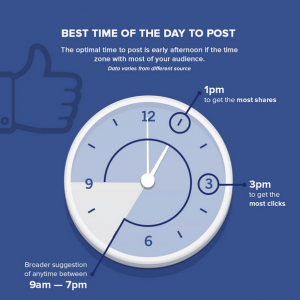AdWords released expanded text ads in late July. Columnist and Googler Matt Lawson answers some FAQs about what you should consider as you expand your own ads.

Expanded text ads (ETAs) are a big deal. At least a dozen articles on this fine site can attest to that fact (including one that I wrote myself).
Spread out across all of the articles and discussions online, I’ve read more than a bit of speculation. So, I decided to get together with the product management team behind expanded text ads to definitively answer some of the most common questions.
1. Does anything bad happen if I wait until the last possible moment to upgrade?
You’re not directly penalized or anything like that. However, I wouldn’t recommend sitting on your hands.
Think about how long you’ve been honing your standard text ads — probably years, right? Early adopters of ETAs have generally said that iterating on successful ads is crucial. The earlier you adopt, the earlier you start learning things.
2. How do ETAs interact in the auction, especially with standard text ads still running?
Nothing about the AdWords auction has fundamentally changed. Each ad receives specific, auction-time quality ratings, and that quality rating is combined with your bid and the expected impact of your ad extensions to create an Ad Rank.
There’s one nuance that’s been incorporated for ETAs, though. Here’s a bit from the Help Center that’s relevant:
To calculate the most accurate expected CTR, it’s important that the influence of ad position (as well as other factors that affect visibility, such as extensions and other ad formats) on expected CTR is taken into account and removed from the determination of expected CTR.
The main goal of the system boils down to measuring the performance of your ads against the average lift of ETAs generally. If your ETAs are average performers overall, then you shouldn’t see any changes in your core ad metrics. If you’re performing better or worse than that average, though, your Ad Rank would increase or decrease accordingly.
In the end, it creates a world where expanded text ads and standard text ads can compete more fairly. The idea is to prevent ETAs from getting a large advantage in the auction simply because they have more prominence.
3. Why are my expanded text ads performing worse than my standard text ads?
It’s possible that your ETAs are simply worse ads than your standard text ads. Expanded text ads are an opportunity to rethink your entire creative, but be thoughtful about it. Don’t make such a drastic change that your ad isn’t relevant to a user’s query anymore.
A new ad should still consider the lessons that you’ve learned previously. Successful calls to action, benefits or dynamic aspects like customizers or keyword insertion should be incorporated. You can even start creating new ads by moving what used to be in your description line 1 up to headline 2. It’s important to try out some different things, but you want to test and iterate.
With that said, it’s also possible that your metrics for judging performance aren’t the best. Which leads to the next question:
4. How do I know if my ETAs are performing better than my standard text ads?
At first glance, simply comparing the click-through rates (CTR) for your standard and expanded text ads seems like it should provide a good answer. But CTR alone isn’t the best way to evaluate performance — there are other factors you need to take into account.
When you are looking at metrics, it’s important to make like-for-like comparisons. Make sure you are looking at Google.com traffic vs. Search Partners by segmenting based on “Network.”

If you’re optimizing your ads to rotate for clicks or conversions, % served can tell you which ads are being prioritized for performance and is often a better indicator of how relevant your ad is. If you’re comparing CTRs, look at the CTRs of ads within an ad group, while making sure everything else remains consistent (things like position and device).
In some cases, expanded text ads may be providing more impressions (e.g., for different keywords), and the click-through rates may not be comparable.
5. Once my ETAs perform better than my standard text ads, should I get rid of all of my old ads?
Be cautious. You want to be sure that your improved performance is consistent and sustained. If you’re too quick on the trigger when removing your standard text ads, it’s possible that you might lose impressions.
If you’re on the fence, I’d say leave them in while optimizing your ads for clicks or conversions; don’t leave them rotating evenly if you know expanded text ads are winning. If those old ads are worse performers, they shouldn’t serve much anyway.
6. What should I think about when testing to find the best ETA?
Focus tests on your headlines. Your description text is helpful, for sure. But in terms of what users see and what they actually click, your headline is what carries the most weight.
7. How do we connect with mobile users now that expanded text ads don’t support mobile-preferred creatives?
ETAs are optimized for the most popular devices, so they should do a great job of connecting with mobile users. Our product managers understand that control is important, though, so they took a hard look at how people were using mobile-preferred creatives with standard text ads. They’ve ensured that the two major ways people took advantage of mobile-preferred ads would still be present:
- Mobile URLs can be used to direct mobile users to the best pages on your site.
- Mobile ad customizers can be uploaded via business data to create mobile-specific calls to action and other benefits.
I know that not everyone is comfortable using business data yet, so we’re also working on additional functions to make it even simpler to tailor ads to mobile users. Stay tuned.
Also, I should point out that ETAs are designed to work across devices. The search results have been streamlined to improve the user experience on Google Search and to make that experience consistent across desktop, tablet and mobile.
8. When will ETAs be available with other formats like call-only ads and Dynamic Search Ads?
The sooner the better. We don’t have specific dates to announce yet, but know that our teams are working their butts off to get things in place as quickly as possible.
9. Should I be concerned about my expanded text ads being truncated?
Headline truncation happens in extremely rare cases on a small slice of smaller-width desktop browsers. It’s important to note that some of our preview tools overstated how often truncation actually occurs in the past. Check out this post for more info.
10. Is there a way to edit any subdomain that might be showing in my ad?
In the pre-ETA world, you could specify a final (and unseen) URL and a display URL. Now, your subdomain will always be extracted and included as part of the visible URL that shows in your ad. This decision was made because of user trust.
People look to your URL to understand where they’re going. It’s crucial that an ad accurately reflects what site someone is clicking on (which is something that people tried to take advantage of in the old setup).
If you have a unique situation where having a different display sub-domain has a clear and compelling user value, and you would like to discuss options, contact your Google account team.
11. What if I don’t want my ads to be expanded?
Most people don’t ask this, but it is something I’ve heard. Once standard text ads go away, you can still mimic their format via expanded text ads.
Your old headline can be headline 1, your URL could be headline 2, then you can keep your description text as is. You have to use all of the main fields, but you don’t need to use all of the available characters within those fields.
If you’re particularly attached to pre-existing ad text, you can adapt it to fit into the new format easily. Just keep in mind that your competitors are probably figuring out how to put that extra space to good use.
12. How do ETAs work on the Display Network?
They work like standard text ads do. You can add them to your campaigns, and they’ll serve, but we recommend using responsive ads.
This new format is designed specifically for the Google Display Network — it’s super-flexible and can fit seamlessly into just about any website or app.
13. Is there anything we should do differently with ETAs on brand keywords?
Most likely, yes. But like so much else, that’s not really a change from standard text ads. Ad text has always been about writing a useful answer to whatever a user is searching for. And what’s compelling will most likely change if a user is already looking for you specifically.
Carry over what you know to be compelling in brand ads as you test what’ll work best in this new, expanded format. I know that some advertisers are seeing success with shorter ads for brand terms. You should also think about including words like “Official Site” that indicate trust.
Finally, fewer commercial words can be effective. You might consider a branding approach instead of calling someone to action in your text.
Conclusion
Expanded text ads are great, and it’s important to make a smooth transition by January 31, 2017. If you’re about to make this transition yourself, keep these main guidelines in mind:
- Test. Ideally, test a lot of ads per ad group (three to five, depending on your bandwidth).
- Remember what you already know to be true from earlier tests.
- Focus on testing your new expanded headlines.
- Leave standard text ads running until ETAs prove to be more successful.
If you have more questions, keep asking them. We’re listening.
[Article on Search Engine Land.]
Some opinions expressed in this article may be those of a guest author and not necessarily Marketing Land. Staff authors are listed here.
Marketing Land – Internet Marketing News, Strategies & Tips
(102)
Report Post







